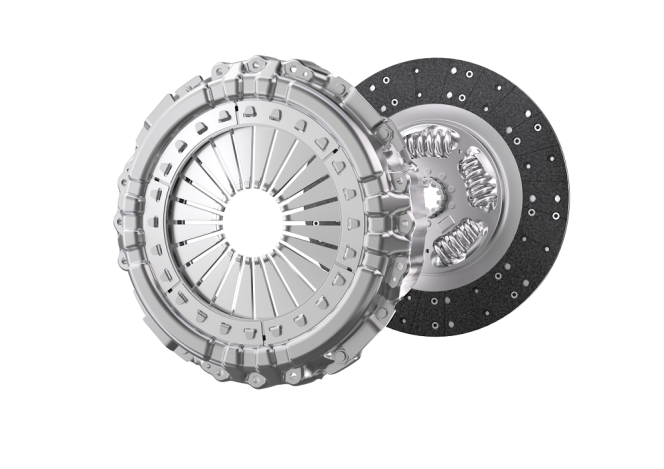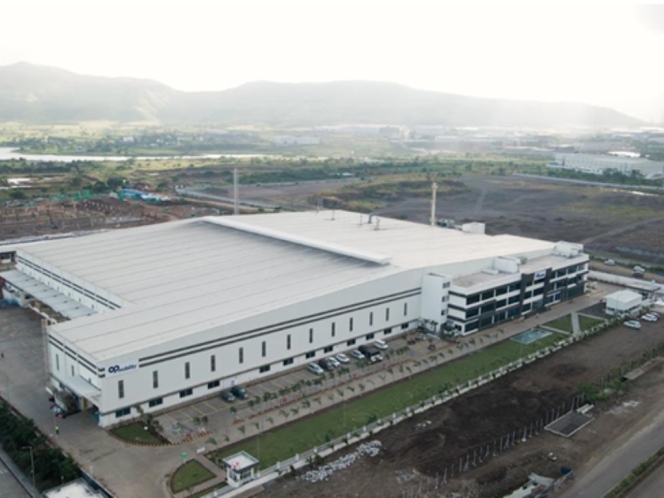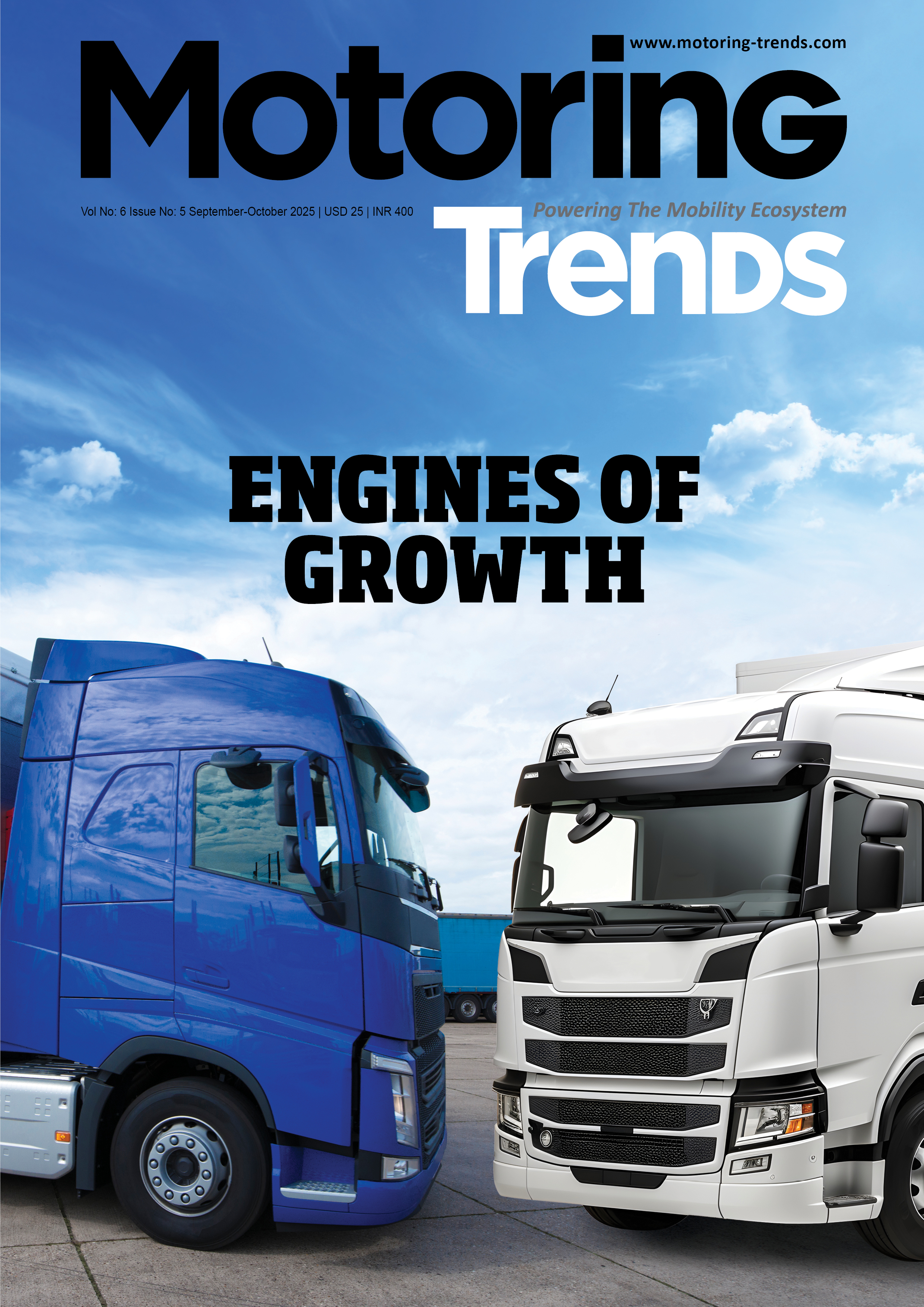Enhancing In-Cabin Experience With Smarter Chips
- By Gaurav Nandi
- January 20, 2025

Texas Instruments unveiled four integrated automotive chips in a virtual event, designed to reimagine in-cabin experience for both drivers and passengers. The high-tech chips were also showcased at the Consumer Electronics Show 2025 held in Las Vegas. The line-up included the AWRL6844 millimetre-wave radar sensor with AI-enhanced safety features, the AM275x-Q1 MCUs and the AM62D-Q1- a family of MCUs featuring the powerful C7X DSP core for premium audio- and the innovative TAS6754-Q1 audio amplifier with proprietary 1L modulation technology.
Alluding to the matter, a company official said, “The new-age automotive chips centre around advanced driver assistance systems (ADAS) and infotainment and cluster. As consumers, we expect a lot from our vehicles and this innovation is driven by two key factors. First, new government regulations and car assessment programmes mandate improvements in passenger safety, requiring more accurate and robust in-cabin sensing systems to monitor a variety of situations. Second, there is a growing demand for premium audio experiences as in-car systems now often surpass home audio systems in quality, delivering unparalleled experiences across a wide range of vehicles.”
“Our silicon solutions are designed to empower designers to enhance the overall in-vehicle experience without compromise. To that end, we are excited to debut three new automotive products,” he added.
Radar sensor
The AWRL6844 is designed to help customers deliver a safe and feature-rich user experience. It aims to enhance the user experience visually and improve safety. The company highlighted that OEMS face challenges in meeting stringent requirements while minimising cost and design complexity. Moreover, requirements for transference detection would award points only for direct sensing systems capable of detecting the presence of a human inside a vehicle by tracking signs of life such as artery aspiration rates and movements. Future in-cabin sensing systems would need to accurately differentiate between children and adults to enhance user experience and safety.
The AWRL6844 is the industry’s first single-chip solution that supports these three key applications, which has been achieved through the integration of AI into the silicon, claimed the company.
The sensor integration was said to provide optimal spatial resolution, delivering dense point cloud data for applications in a cost-effective manner while leveraging edge AI processing. This high-resolution data feeds into AI-driven algorithms on a customisable, on-chip auto accelerator and DSP, enabling local data processing. This approach, allows automotive systems to achieve advanced sensing with a single chip solution, reducing system cost and complexity.
The AWRL6844 will help OEMs could deliver seamless detection, validation and classification, simplifying sensing topologies and modalities used today or in the future.
For instance, the system can detect localised occupants with up to 98 percent accuracy to minimise detection errors. This eliminates uncertainty related to seatbelt detection when a non-human object is on the seat. When the car is parked, the sensor uses neural networks to classify adults and children with high accuracy, trained to detect micro-movements and distinguish between them. The device also enhances detection in blind spots, preventing children from being left unattended in vehicles.
Audio processor
On the other hand, the AM275x-Q1 MCU and AM62D-Q1 processors enable leveraging advanced audio features that enhance in-cabin experience. Another company official noted, “Audio is increasingly used in cars to enhance safety with features like door chimes and seatbelt reminders as well as to improve passenger comfort across vehicle fleets. These features are no longer limited to luxury vehicles. Our solutions bring premium audio capabilities across the entire OEM vehicle line-up, leveraging a unified software investment.”
“At the core of this innovation our C7x DSP core. It supports a higher number of speakers and multiple audio zones, delivering high-quality sound throughout the vehicle. The C7x DSP achieves 4-8 times the processing performance of competing devices, enabling the management of multiple audio features within a single core, thus reducing the need for external components,” the official added.
The C7x DSP’s performance is made possible by its 256-bit vector architecture and single-cycle memory access, alongside pipeline optimisations that drive industry-leading audio benchmarks. Additionally, the integrated neural processing unit allows customers to develop and execute AI algorithms on the same platform. This high processing capability reduces component requirements for automotive audio systems while enabling advanced features like real-time tuning, spatial audio and latency-reduced ANC.
“This is especially critical for EVs, which often lack passive sound-dampening materials, relying instead on active solutions to maintain cabin quietness. TI’s solutions also support Acoustic Vehicle Alerting Systems (AVAS) for external pedestrian alerts, making them integral to modern EV designs,” added the official.
The AM275x-Q1 MCU is a DDR-less single-chip solution tailored for high-performance audio applications, supporting up to 32 channels. Its integrated 4.5 MB SRAM and up to 6 MB L3 memory eliminate the need for external memory, reducing system complexity. In contrast, the AM62D-Q1 processor is DDR-based and suited for applications requiring large memory sizes such as high-resolution playback or simultaneous AI and audio processing. With a high-speed DDR4 controller, it ensures real-time compute capabilities and smooth performance.
The company claimed that both chips will enable engineers to design premium audio systems with minimal investment in hardware and software.
The TAS6754-Q1 Class D amplifier’s modulation technology reduces the number of required inductors by half. This advancement enables more compact, lightweight and cost-efficient designs without compromising audio quality. Additionally, the amplifier incorporates real-time load diagnostics, streamlining design processes and enhancing efficiency to meet OEM demands effectively.
Commenting on the new products, Senior Vice President of TI’s Embedded Processing Amichai Ron said, “Today’s drivers expect any car – entry-level to luxury, combustion to electric – to have enhanced in-cabin experiences. TI continues to provide innovative technologies to enable the future of the automotive driving experience. Our edge AI-enabled radar sensors allow automakers to make vehicles safer and more responsive to the driver, while our audio systems-on-chip elevate the drive through more immersive audio. Together they create a whole new level of in-cabin experiences.”
The chips are available at the company’s website.
- Avinash Chintawar
- Varroc
- Arjun Jain
- Bosch Chassis Systems India
- Bosch India Foundation
- Robert Bosch
- Bosch Group
- Bosch Electrical Drives India
Varroc Appoints Avinash Chintawar As New COO
- By MT Bureau
- October 15, 2025

Pune-headquartered automotive supplier Varroc has appointed Avinash Chintawar as its new Chief Operating Officer (COO) for Business I, effective 15 October 2025. He will report to Arjun Jain, Whole Time Director & CEO – Business I.
In his new role, Chintawar will oversee the Operations Vertical within Business I, with a focus on strengthening efficiencies and performance.
Prior to joining, Varroc, Chintawar served as Managing Director of Bosch Chassis Systems India and as Chairman of Bosch India Foundation. He previously held leadership positions within the Bosch Group, including Director of Operations at Robert Bosch Bamberg (Germany) and Managing Director at Bosch Electrical Drives India. He holds a Bachelor of Engineering from Visvesvaraya National Institute of Technology.
Jain, said, “We are delighted to welcome Avinash to the Varroc leadership team. His extensive experience and deep understanding of achieving operational excellence align perfectly with our needs as we drive the next phase of our growth. I am confident that under his leadership our operation will scale new heights of efficiency and sustainability.”
Chintawar, said, “I am excited to join Varroc at a time when the industry is undergoing such dynamic change. I look forward to working closely with the team to enhance operational excellence and contribute to its vision of sustainable and future-ready growth.”
ZF Group Bags Order To Supply Heavy-Duty Clutch Systems To CV Major In India
- By MT Bureau
- October 08, 2025

German tier 1 supplier ZF Group has secured a significant contract to supply its 430mm heavy-duty clutch systems to one of India’s leading commercial vehicle manufacturers.
The clutch systems, the company shared, is custom-engineered and manufactured locally, specifically adapted to meet the rigorous demands of Indian operating conditions and will power the OEM's higher horsepower engine platforms for both domestic and select export models.
The agreement, signed in May 2025, involves the supply of several thousand units, with the Start of Production (SOP) scheduled for mid-2026. The clutches will be produced at ZF's Chakan plant in Pune, reinforcing the Group's strategy to strengthen its regional manufacturing capabilities and commitment to localisation in India.
The new clutch system is designed for robust performance and features advanced lining materials that promise up to 20 percent longer clutch life, aiming to reduce maintenance costs and optimise the total cost of ownership for fleet operators. It is also designed to be compatible with both Manual Transmission (MT) and Automated Manual Transmission (AMT) systems.
Akash Passey, President - Region India, ZF Group, said, “ZF’s strategic focus on localisation and innovation for the Indian market, is reconfirmed with this business win. With our globally proven technological expertise and leveraging the strong local manufacturing footprint in India, our customers can access advanced technologies that meet global standards while being tailored for their markets. This win highlights our commitment to strengthening India’s role as a key hub in ZF’s commercial vehicles business.”
Paramjit Singh Chadha, Senior Vice President - CVS Division (India), ZF Group, said, “This business win is a strong endorsement of our advanced heavy-duty clutch technology which perfectly addresses the demanding operating conditions in India. This 430mm clutch system offers superior durability, optimised performance and compatibility with future-ready driveline architectures, including AMT. By localising production at our Chakan facility, we reinforce our commitment to the ‘Make in India’ vision and supporting our customers’ growth ambitions for both domestic and export markets.”
OPmobility Targets To Double Sales In India, Opens New Plant In Pune
- By MT Bureau
- October 08, 2025

French automotive component supplier OPmobility is accelerating its growth in India, with the strategic goal of more than doubling its sales by 2030.
The Group recently inaugurated its new facility Badhalwadi, Maharashtra and has commenced construction of another plant in Kharkhoda, Haryana. It already operates five plants in the country, is strengthening both its production footprint and its engineering and digital capabilities.
OPmobility is structured into four complementary business groups: exterior and lighting systems, complex modules, energy storage systems and battery and hydrogen electrification solutions, allowing it to offer a comprehensive range of mobility solutions. The company is a significant global player, reporting an economic revenue of EUR 11.6 billion in 2024. To meet the challenges of sustainable mobility, OPmobility relies on its 38,900 employees operating across a vast network of 150 plants and 40 R&D centres worldwide.
The Badhalwadi site is OPmobility’s first in India to integrate production capacities for both exterior systems and energy storage systems in one location. Furthermore, the facility is equipped with solar panels that supply 35 percent of its energy needs and predominantly employs women.
The Kharkhoda plant, which broke ground in August 2025, will focus on producing energy storage systems and is scheduled to begin operations in early 2026. This expansion comes as India's vehicle output is forecast to grow by an average of per year between 2025 and 2030. Currently, over one in three vehicles sold in India is equipped with OPmobility components.
Beyond manufacturing, OPmobility is boosting its engineering and digital presence to meet growing demand from both local and global customers. This includes operating four R&D centres that support both the Indian business and worldwide markets. The Group has also established an OP’nSoft software centre in Bengaluru, Karnataka, to enhance its dedicated software entity.
Laurent Favre, Chief Executive Officer, OPmobility, said, "India is a strategic country for OPmobility, with a fast-growing automotive industry and as a platform of skilled workforce. Having developed strong historical partnerships with international and Indian automotive manufacturers, who benefit from a dynamic domestic and international demand, the Group aims at more than doubling its sales in the country by 2030. This will notably contribute to one of the pillars of our strategy, which is the geographical diversification of our sales. The reinforcement of our engineering, digital and software capacities in the country allows us to improve our overall competitiveness in engineering in all our countries and to continue to enhance our performance.”
Laufenberg And Wevo-Chemie Develop Roll-To-Roll Hydrogen Gasket Production Process
- By MT Bureau
- October 05, 2025
Laufenberg GmbH, a specialist in coating technologies, and WEVO-CHEMIE GmbH, an expert in polyurethane, epoxy and silicone materials, have jointly introduced an innovative manufacturing process that promises to enhance the scalability and reduce the costs of hydrogen technology components. This new method addresses the limitations of conventional sealing production for fuel cell and electrolyser stacks, which has traditionally depended on prefabricated flat gaskets or molded O-rings. These established techniques are inherently discontinuous, requiring individual moulds that result in a manufacturing process that is both time-intensive and costly. The collaborative solution from Laufenberg and Wevo enables the continuous, high-throughput, roll-to-roll production of flat elastomer gaskets. This breakthrough offers manufacturers a scalable path to lower expenses while simultaneously facilitating more efficient and automated production processes for critical hydrogen infrastructure like fuel cells, electrolysers and redox flow batteries.
The core of this new technique involves applying WEVO’s specially formulated two-component liquid elastomers onto a carrier film using Laufenberg’s precision coating equipment. This coated material then travels through a multi-zone curing oven, where temperature is meticulously controlled. An optional pre-curing stage with infrared emitters can be employed to accelerate the process and eliminate air bubbles. The line operates at variable speeds, offering immense production flexibility and the final product is supplied either on large rolls or as precision-die-cut gaskets, ready for installation.
This advanced process accommodates a wide range of specifications, producing pure elastomer seals with thicknesses from a minimal 20 micrometres up to two millimetres. By combining the elastomer with a carrier film, hybrid seals can be created with total thicknesses reaching four mm, catering to demands for both ultra-thin and highly robust sealing solutions. The carrier film can either be removed after curing or remain integrated to provide enhanced structural stability, which is particularly beneficial for softer sealant materials.
Leveraging WEVO’s long-standing expertise in developing low-permeation silicones and polyurethanes, the material properties can be precisely tailored to the application. This joint development marks a significant evolution from traditional liquid dispensing methods towards the efficient production of pre-fabricated, high-performance gaskets. For manufacturers, this innovation represents a critical step forward in streamlining the production of essential components for the hydrogen economy. Representatives from both companies will be available at upcoming industry events to discuss integration and material selection.






Comments (0)
ADD COMMENT